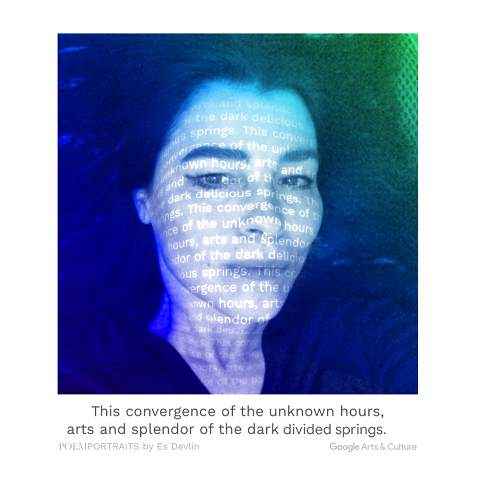Google’s new collaborative project auto-generates poems for your portraits
Google's new collaborative project with English artist Es Devlin creates a blend of poems and portraits
The online project is now live and is best looked at on a laptop browser

It’s not unlike Google to support and sponsor projects that demonstrate something quirky and creative online. In its latest collaborative project with English artist Es Devlin, Google is showing off an online tool that creates something called a Poem Portrait. It’s essentially a stylised portrait image of you presented with a two-line poem in which one word is contributed by you, along with the image for the portrait. The project is called POEMPORTRAITS, and it’s designed to work best on desktop browsers.
 Survey
SurveyHere’s how you can go about creating your own Poem Portrait. Start by heading over to POEMPORTRAITS. Click Begin. In the big text box you see below, enter a word of your choice and hit Donate. But remember that the word you enter will be “instantly incorporated into an original two line poem generated by an algorithm trained on over 20 million words of 19th century poetry.” After the short animation, hit Continue.
You will then be asked to give the site permission to use your PC’s camera for the portrait. If you agree, click on Authorize Access and smile for the camera. If you don’t feel like it or have a desktop with no inbuilt camera, you can skip this step and get just the poem text. Soon, you should be looking at a two-line auto-generated poem. If you lent the site your image, you should see a stylised portrait of yourself with it. “The coloured woven backgrounds on this site are inspired by Es Devlin's long standing friendship and collaboration with the weaver and artist Ptolemy Mann,” reads the site’s help section.
“To create the technology behind POEMPORTRAITS, I collaborated with Google Arts & Culture Lab and Ross Goodwin. Ross trained an algorithm to learn to write poems by reading over 25 million words written by 19th century poets. It works a bit like predictive text: it doesn’t copy or rework existing phrases, but uses its training material to build a complex statistical model. As a result, the algorithm generates original phrases emulating the style of what it’s been trained on,” writes Devlin in Google’s blog post on the matter.
Vignesh Giridharan
Progressively identifies more with the term ‘legacy device’ as time marches on. View Full Profile